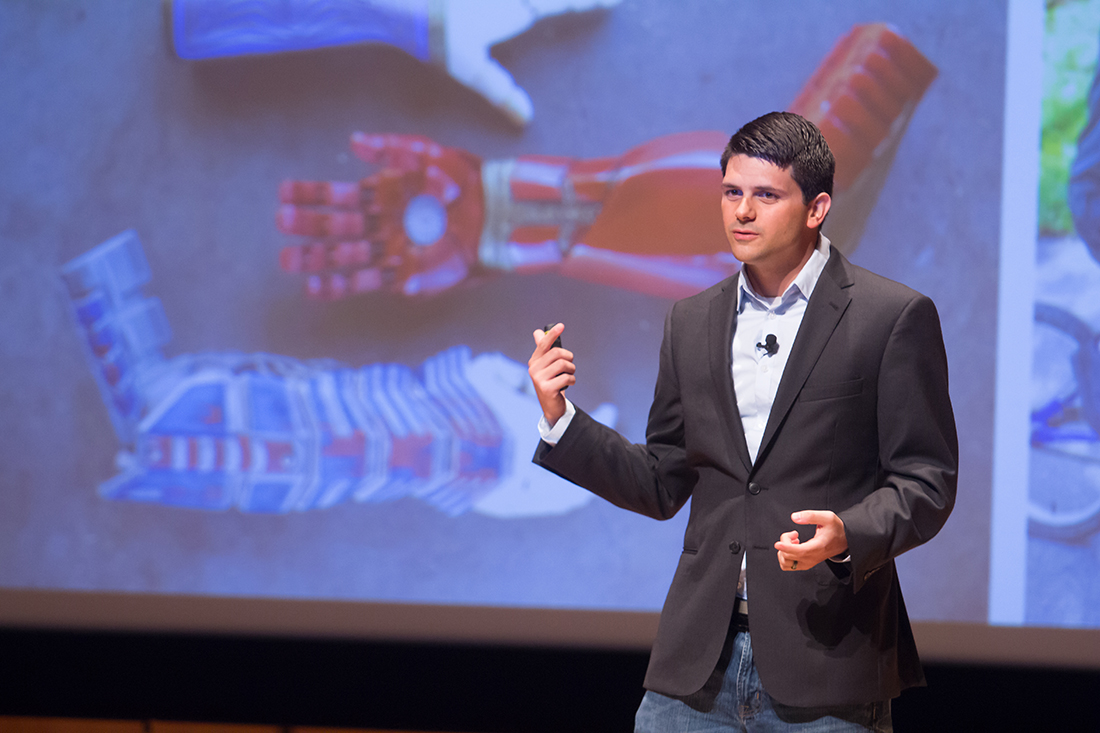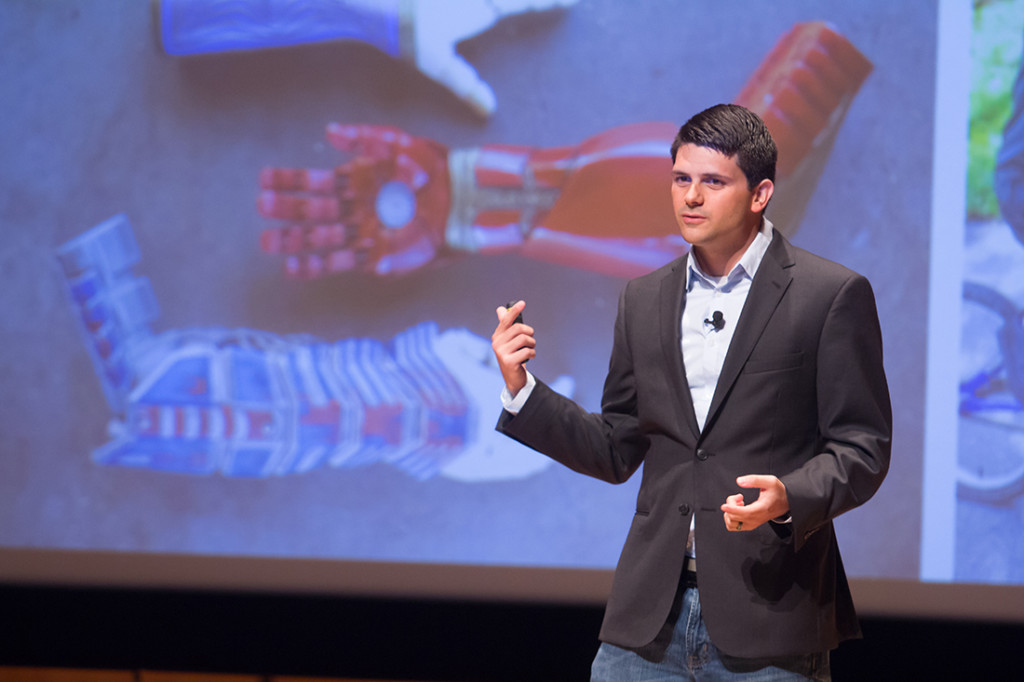
Limbitless Solutions founder Albert Manero shows the designs of various 3-D robotic arms his nonprofit organization created during Student Leadership Day of HESTEC 2016 at the Performing Arts Complex in Edinburg. Manero was the guest speaker last Tuesday at the Distinguished Speaker Series, sponsored by Student Involvement./Gabriel Mata/The Rider
BY Megan Gonzalez | THE RIDER

Albert Manero dreamt of building space planes as an aerospace engineer at the University of Central Florida. That was until he received an email from a mother asking him to build a prosthetic arm for her son, Alex Pring.
Last Tuesday, Manero, founder and executive director of Limbitless Solutions, was the guest speaker of the UTRGV Distinguished Speaker Series at the Performing Arts Complex in Edinburg.
Limbitless Solutions is a nonprofit organization devoted to providing 3-D printed bionic arms to children around the world. With a team of 85 students, the company has received thousands of requests from more than 20 countries.
A traditional prosthetic arm can cost $40,000 and some insurance companies don’t recognize it as a medical necessity. Yet, Limbitless Solutions sold its prosthetics for 1 percent of the original price.
“What came to my attention, when it started showing up in my email inbox, is that there’s about a billion people around the world who have some sort of disability,” Manero said. “And, if you look at some of these countries, there’s like, 30 million people who need a form of prosthetic.”
Unsure about the predicament, he called his friends, who are in different career paths, for assistance and in 2014 Limbitless presented its first bionic arm to Alex.
Now, the children with 3-D printed prosthetics are bringing their bionic arms to their schools and changing the perspective of engineering.
“We’ve found that somewhere between fourth grade and eighth grade, we’ve ruined science for people. I’m not sure if any of you had that experience,” Manero said. “The perspective is that as an engineer, we just wear white lab coats. We don’t talk to anyone. We can’t make eye contact and everything we do just kind of stays in the laboratory.”
In 2013, the Junior Achievement USA and ING U.S. Foundation presented a Teens and Careers Survey, which revealed a decline in teens’ interest in science, technology, engineering, math (STEM) and medical-related fields.
Thanks to Limbitless Solutions, people are seeing the children in a different way. What were once harsh questions are now amazement by the new technology.
From actor Robert Downey Jr. to the performance art company Blue Man Group, many people have collaborated with the Limbitless team to help change the lives of children all around the world.
The first prosthetic arm’s design was plain. There were no designs, but only a simple white color. But as time went on, Manero began to hear feedback from the children. They wanted something more personal and humane.
Soon, the Limbitless team not only focused on STEM but also STEAM (science, technology, engineering, art and math), an ethos for the modern age in which art and science come together.
“It takes a big team. It takes a really big team,” Manero said. “It’s going to take a culture change to where we look at engineering and technology as a tool that really changes our community on a local level and a global level.”






